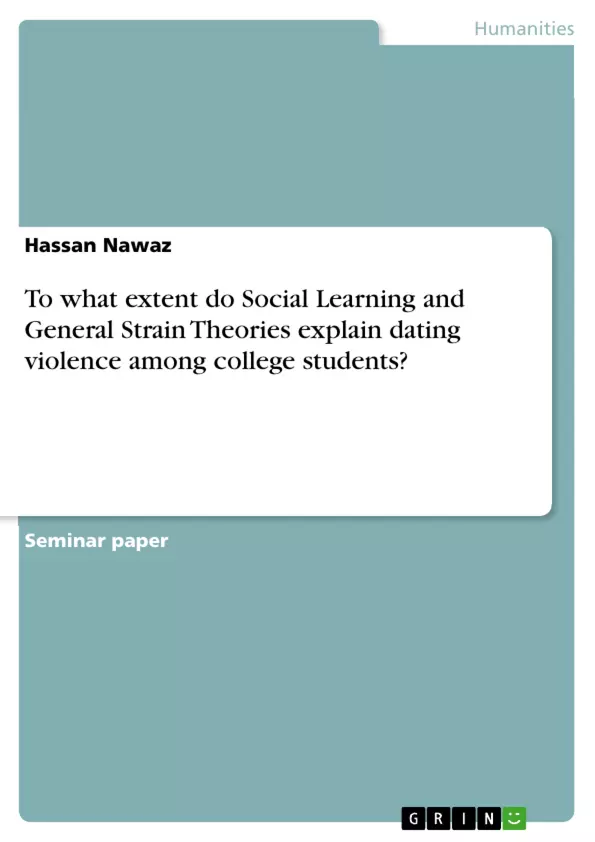Dating violence is the most common form of violence experienced by college students. Recent literature explores individual environmental factors, such as stress and childhood trauma, leading to such violence, but little is known about how these factors interact to explain dating violence. This paper explores General Strain Theory in combination with Social Learning Theory to examine how together, these theories more precisely explain the higher rates of dating violence experienced on college campuses. Previous research has found support for the theories individually. Experiencing childhood abuse and poor coping skills associated with academic and life strains have been found to be the greatest risk factor for dating violence victimization. Research suggests that teaching coping techniques, stress and anger management skills, as well as re-teaching socially acceptable peer interactions need to be included in a successful program to make college campuses safer for female students.
Inhaltsverzeichnis (Table of Contents)
- Abstract
- Introduction
- Topic
- Dating Violence
- Risk Factors
- Prevalence
- Health and Education Costs
- Theory
- Social Learning Theory
- General Strain Theory
- Proposal
- Program
- Conclusion
Zielsetzung und Themenschwerpunkte (Objectives and Key Themes)
This paper explores how General Strain Theory and Social Learning Theory interact to explain the prevalence of dating violence among college students. It aims to identify the risk factors associated with dating violence on college campuses and propose effective intervention and prevention programs.
- Dating violence as a prevalent issue on college campuses
- The role of Social Learning Theory and General Strain Theory in explaining dating violence
- Risk factors associated with dating violence, including childhood abuse, stress, and poor coping skills
- The need for intervention programs addressing both coping skills and social learning
- The importance of effective prevention programs to create safer college environments for students
Zusammenfassung der Kapitel (Chapter Summaries)
- Abstract: This section introduces the research question and highlights the need for a comprehensive understanding of the factors contributing to dating violence among college students. It emphasizes the limitations of existing research and proposes the combination of General Strain Theory and Social Learning Theory as a more effective framework.
- Introduction: The introduction provides background information on the rising prevalence of dating violence on college campuses, citing statistics and highlighting the vulnerability of this demographic. It also discusses the limitations of previous studies and the need for more effective intervention programs.
- Topic: This chapter delves into the definition of dating violence, its various forms, and the specific risks faced by college students. It presents statistics on the prevalence of dating violence among college women, including acquaintance rapes, and discusses the factors contributing to this high rate of victimization.
- Theory: This chapter examines Social Learning Theory and General Strain Theory, outlining their key elements and explaining how they provide a more comprehensive understanding of dating violence. It discusses the relationship between childhood abuse, stress, and negative emotions as contributing factors to violent behavior.
Schlüsselwörter (Keywords)
This paper focuses on the intersection of Social Learning Theory and General Strain Theory as they relate to dating violence among college students. Key concepts include dating violence, victimization, risk factors, stress, coping skills, childhood abuse, intervention programs, and prevention strategies.
- Quote paper
- PhD Hassan Nawaz (Author), 2017, To what extent do Social Learning and General Strain Theories explain dating violence among college students?, Munich, GRIN Verlag, https://www.grin.com/document/371803



